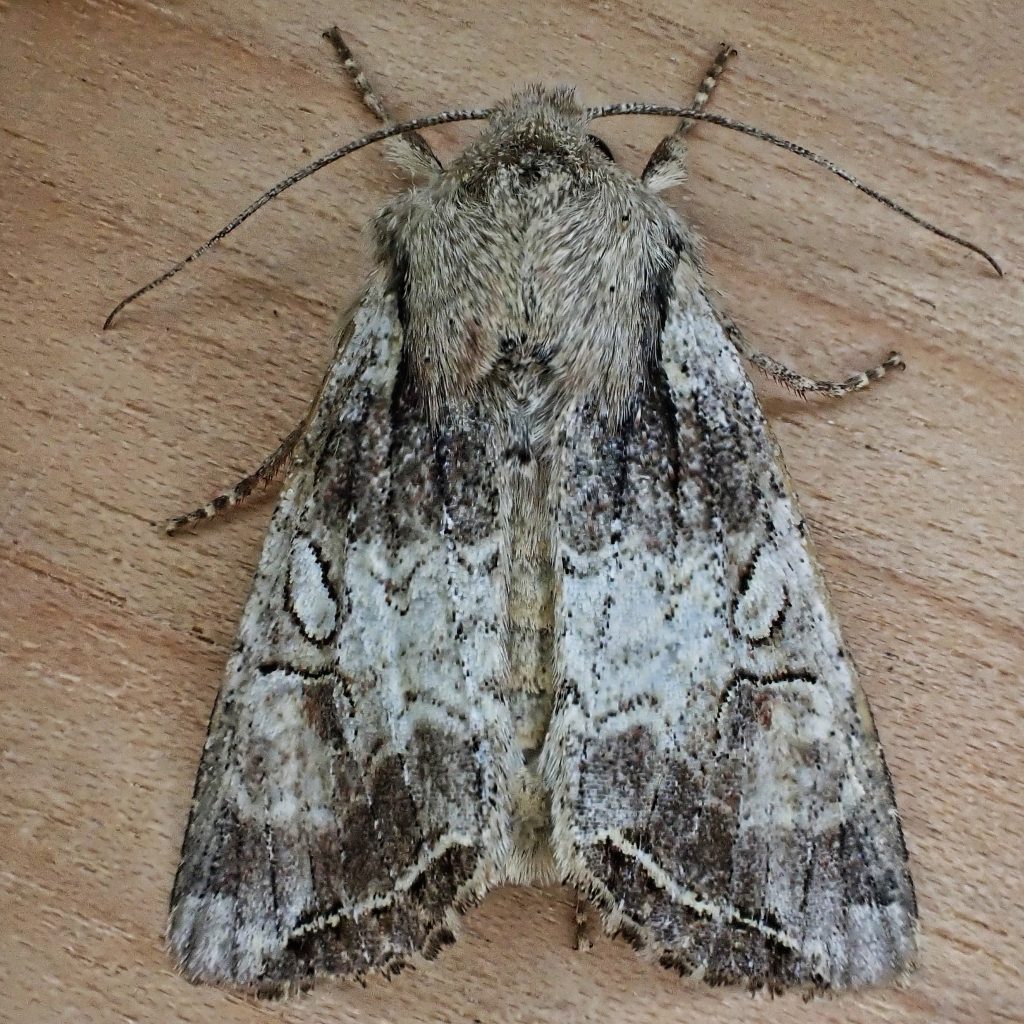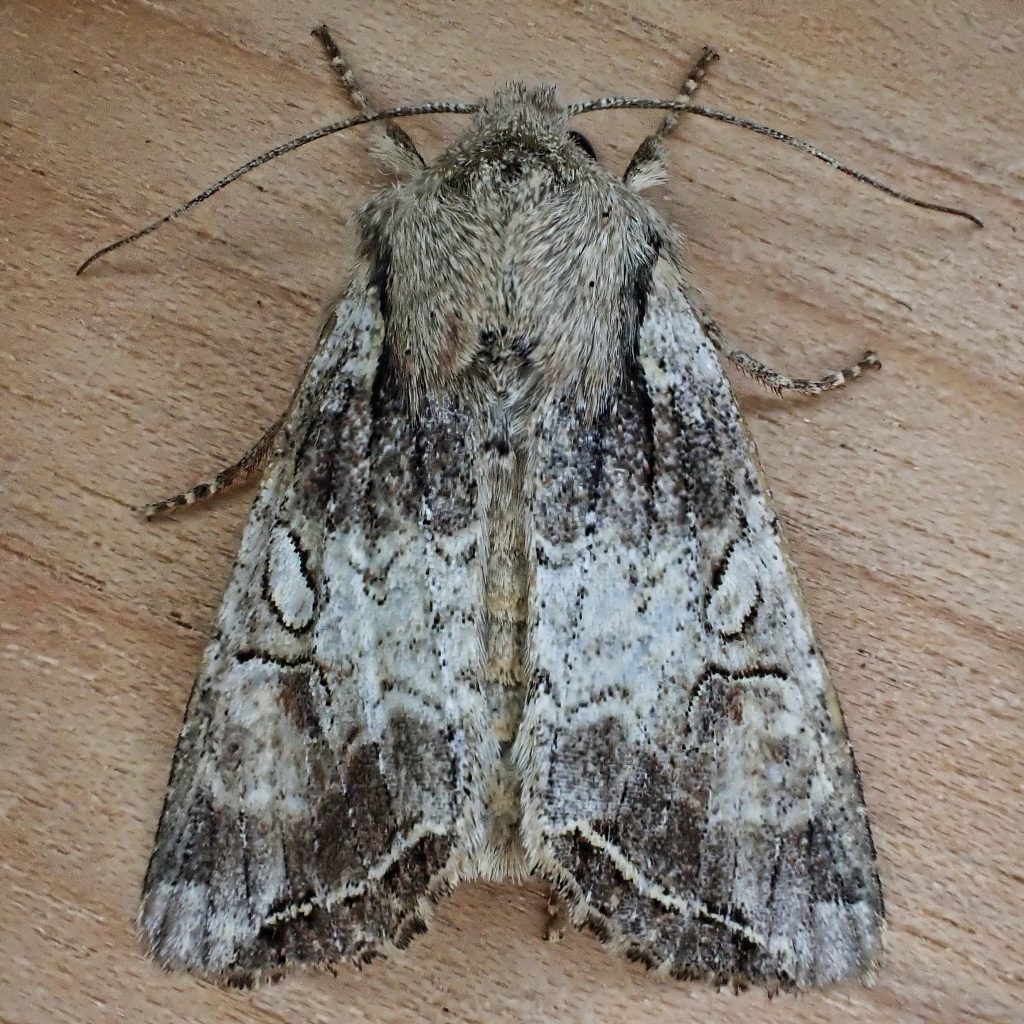
With their wide range of larval hosts, many of which are quite abundant, Egira rubrica can often be a very common visitor when running lights in mixed forests. I recall a warm, moonless night in early May a couple years ago, running lights at Canyon Creek after the first week of the year with temperatures surpassing the 80⁰ mark, when there were at least a couple dozen of these handsome noctuids on my sheets when it came time to breakdown the setup. In fact they are so common that I assumed I’d already profiled them, and only took a couple documentation photos of one on the sheets. Fortunately I discovered my error quite by accident, and was lucky enough to find one perched on my gear bag that I could put in a container and photograph at home. They are settlers on the sheets, and are, like many noctuids, quite phlegmatic about being disturbed.
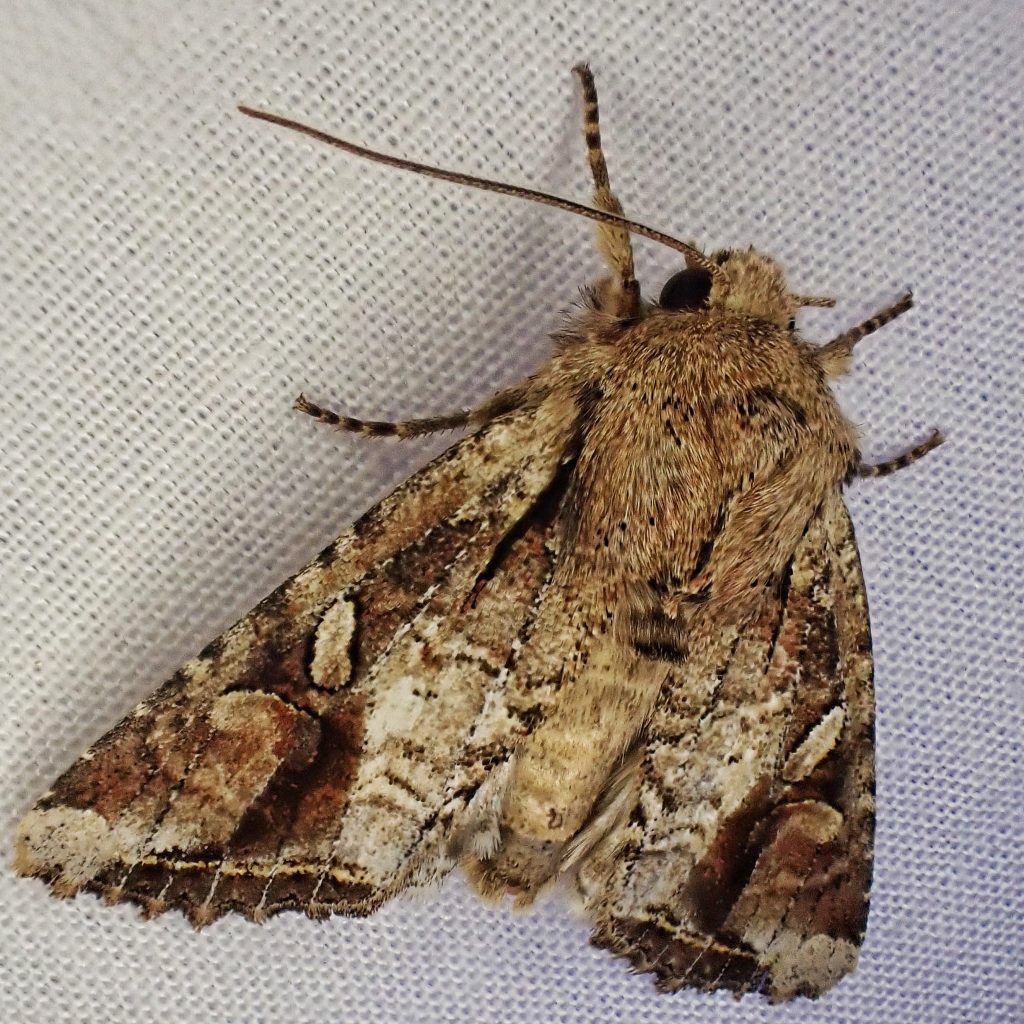
Description– “Adult: forewing a mix of pale yellow, light brown, dark brown, and black; dark brown or black area around reniform spot and descending to ST line; pale apical patch, black basal dash, and black shading in terminal area; lower end of reniform spot filled with black; orbicular spot oval, diagonal; AM and PM lines black, zigzagged; ST line white, smooth; outer margin scalloped; hindwing white with indistinct discal spot, thin terminal line, slightly wavy outer margin.” Species Egira rubrica – Hodges#10514 – BugGuide.Net; Egira rubrica is a common and widespread medium-sized (FW length 15 – 17 mm) light tan spring-flying moth that comes in two forms, with and without heavy black areas on the forewing…Egira rubrica is geographically variable in the Pacific Northwest. The populations from west of the Cascade Mountains are more colorful and tend to be more strongly mottled than those from east of the Cascades. Specimens that are heavily-marked with black are more common in the western part of the range.” PNW Moths, Egira rubrica
Similar species– “Light brown species of Orthosia which also fly during early spring have dark hindwings, lack a basal dash, and also lack the red-brown color in and near the reniform spot.” PNW Moths | Egira rubrica
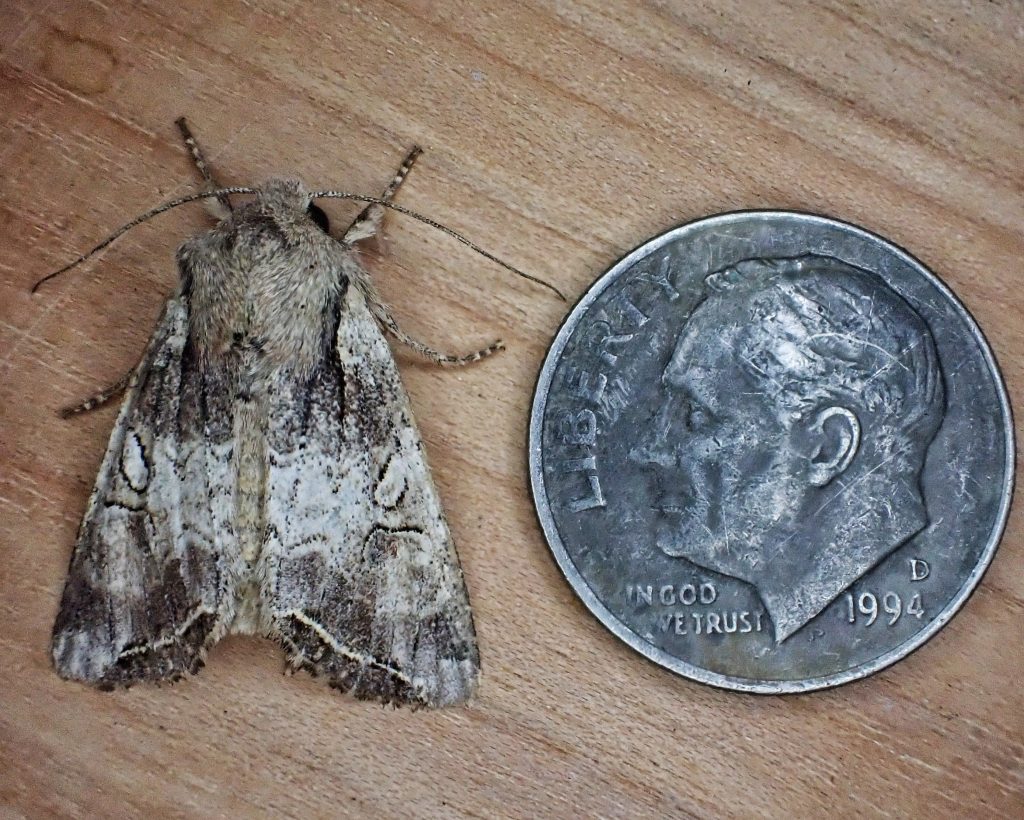
Habitat– “This species is widely distributed in forest and riparian habitats throughout much of western North America. In the Pacific Northwest, it is common to abundant in coastal rainforests, mixed hardwood forests, and riparian zones along creeks and rivers at low elevations west of the Cascades. It is also common in mixed hardwood-conifer forests at middle elevations in the Cascades. East of the Cascades, it is usually uncommon or rare in ponderosa pine forests and mixed hardwood-conifer forests of the Rocky Mountain region, and is most frequent in riparian zones along creeks.” PNW Moths | Egira rubrica
Range– “This species has a fairly wide distribution in western North America. The range includes southern Alberta to the east of our region. To the south it is widespread in California, as well as occurring further east to Colorado and Arizona…Egira rubrica is widespread in the Pacific Northwest, occurring on both sides of the Cascade Range as far north as Vancouver Island and south-central British Columbia. The range extends into California west of the mountains. Records from east of the mountains have been found as far east as the Idaho Panhandle. The southern limit appear to be the Blue Mountains, with no records from southeastern Oregon or southern Idaho.” PNW Moths | Egira rubrica
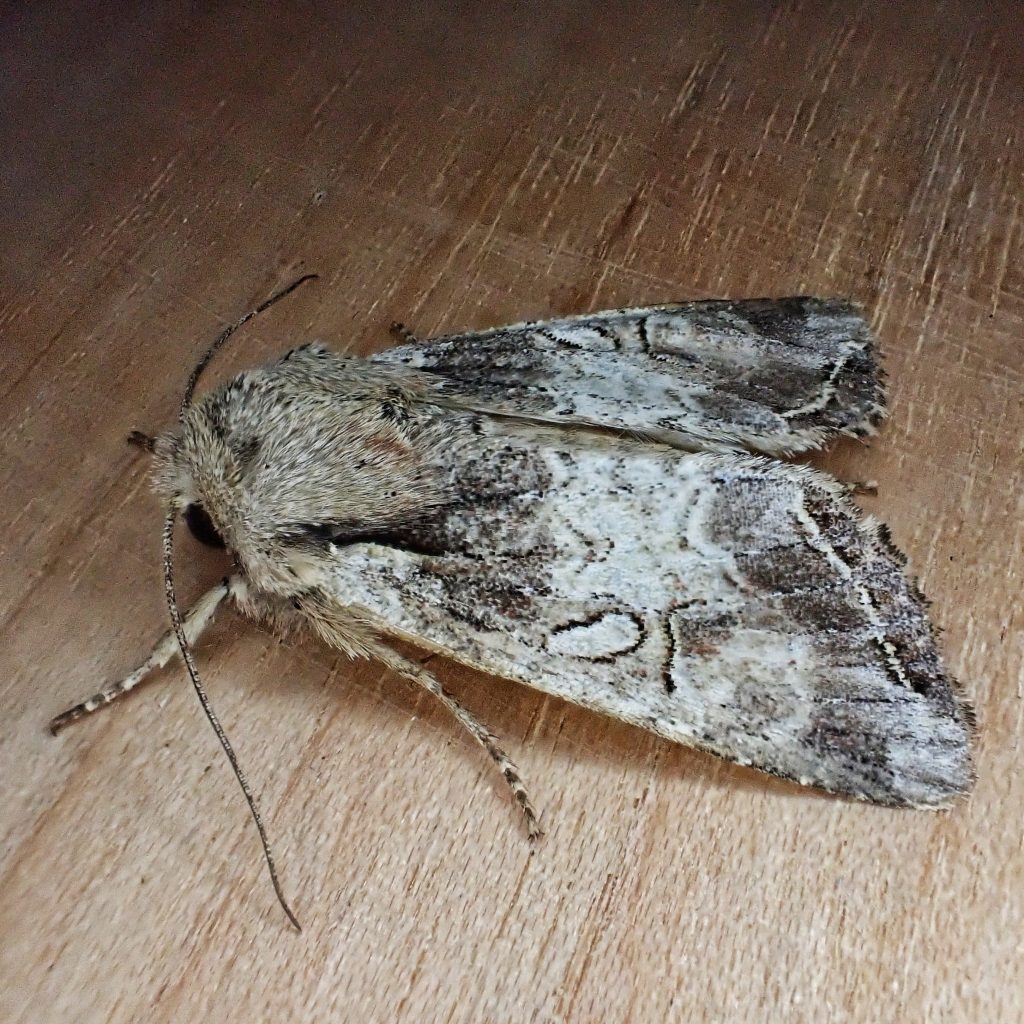
Eats– The larvae of “This species is a foodplant generalist feeding on many kinds of hardwoods, including the families Betulaceae, Salicaceae, Rosaceae, and Rhamnaceae.” PNW Moths | Egira rubrica ; “larvae feed on foliage of Ocean Spray (Holodiscus discolor), Deerbrush (Ceanothus integerrimus), Snowbrush (Ceanothus velutinus)” Species Egira rubrica – Hodges#10514 – BugGuide.Net
Eaten by– Presumably by insectivores of all classes; larvae are undoubtedly parasitized by the larvae of various wasps and flies, but I can find nothing specific to this species.
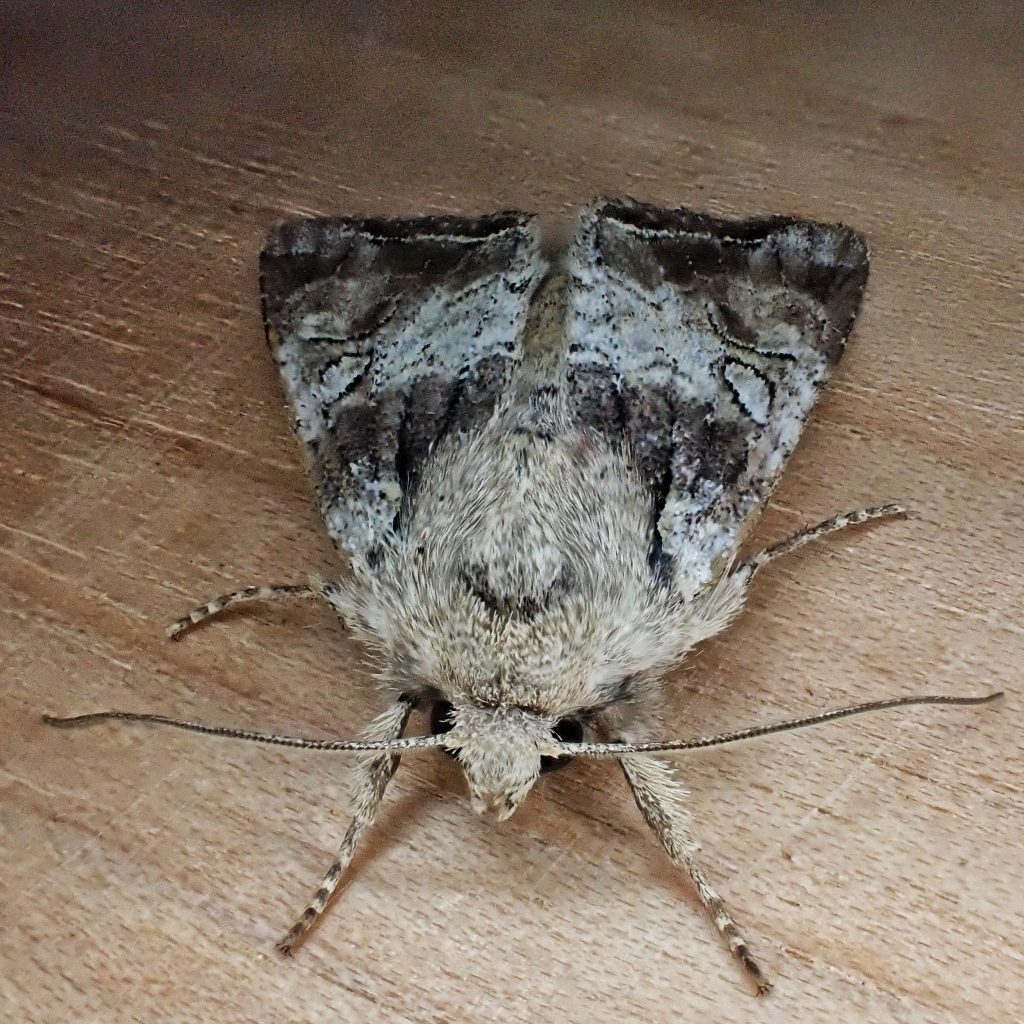
Adults active– “This species flies in the spring like other members of the genus. It has been collected from early March to early June, most commonly in April. It is a nocturnal moth that comes readily to lights.” PNW Moths | Egira rubrica
Life cycle– I can find no information on the life cycle of this species, but since it flies so early in the spring and has just the one flight period, my guess is that they are univoltine, and overwinter as pupae in diapause. Freshly hatched larvae probably feed on opening buds and then switch to new growth, as this is a common pattern in other Egira spp.
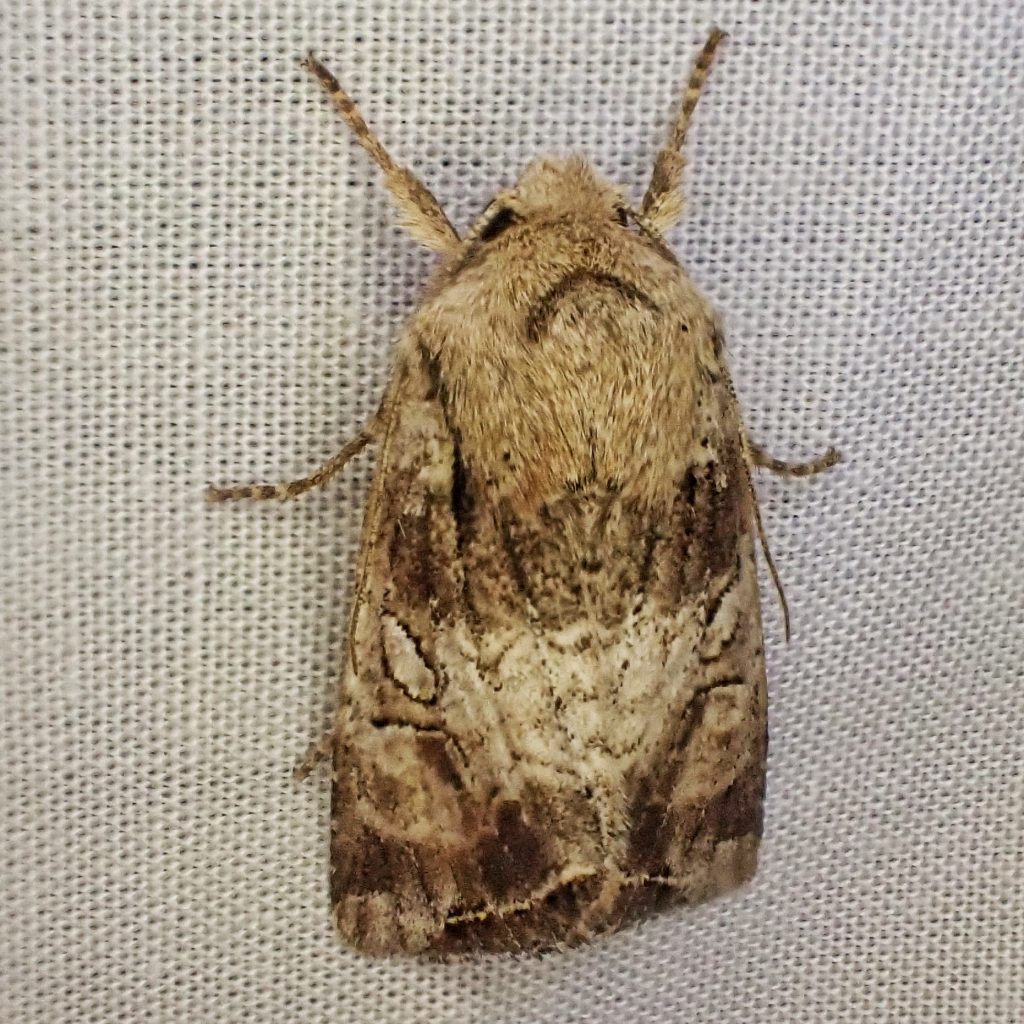
Etymology of names– Egira was named by Duponchel after Aegira, a Greek city in the Peloponnesus. The specific epithet rubrica is from the Latin word for red ocher, and refers to the coloring in and around the reniform spot.
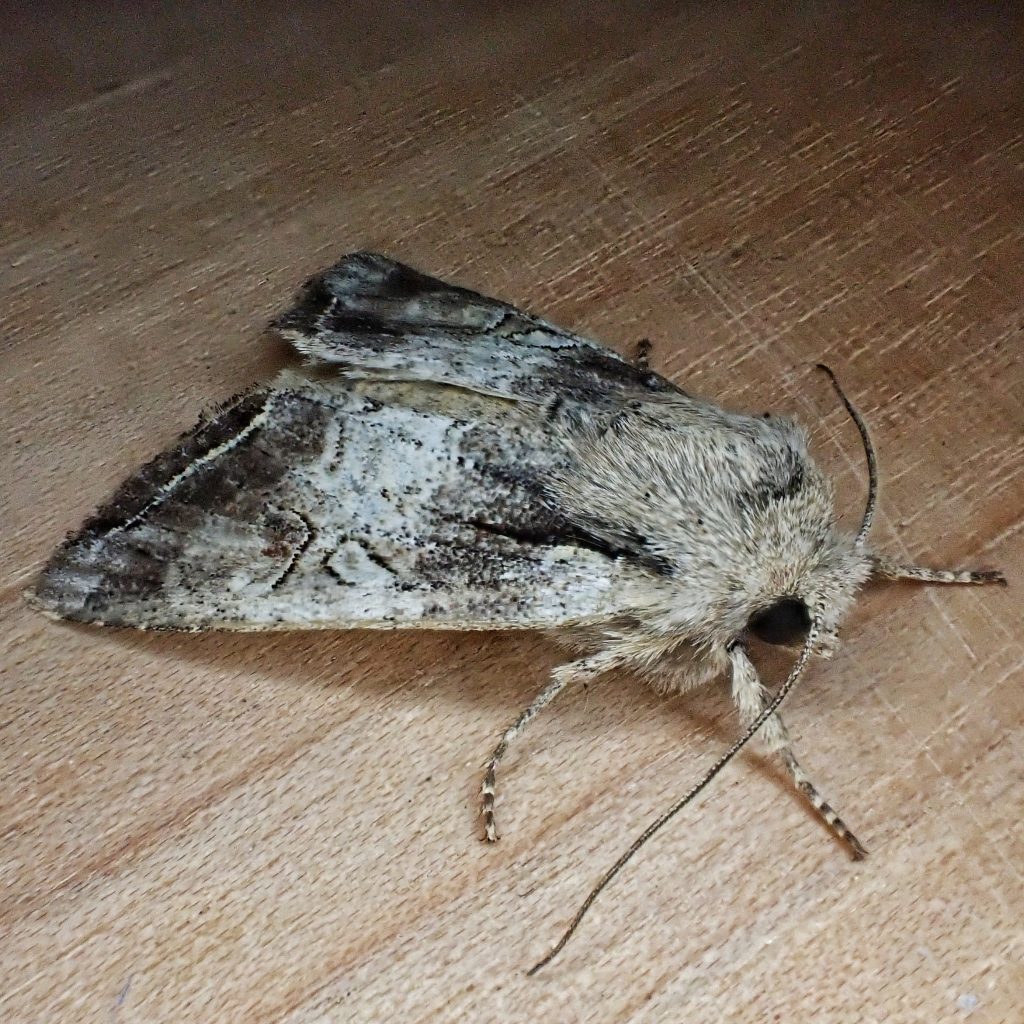
Species Egira rubrica – Hodges#10514 – BugGuide.Net
http://mothphotographersgroup.msstate.edu/species.php?hodges=10514&state=PNW
